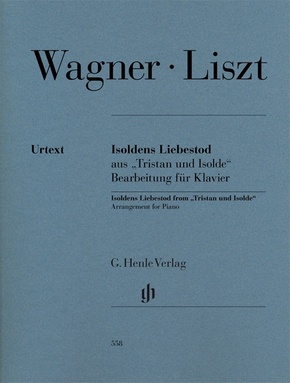Liszt, Franz - Isoldens Liebestod aus "Tristan und Isolde" (Richard Wagner) - Besetzung: Klavier zu zwei Händen
| Verlag | Henle |
| Auflage | 2013 |
| Seiten | 14 |
| Format | 27 x 31 x 0,5 cm |
| Gewicht | 103 g |
| Reihe | G. Henle Urtext-Ausgabe |
| ISBN-13 | 9790201805580 |
| Bestell-Nr | 37990964BA |
Der epochale Klaviervirtuose Liszt verfasste für sein Instrument zahllose Transkriptionen von Werken anderer Komponisten - Wagners Tristan und Isolde als Schlüsselwerk des 19. Jahrhunderts gehörte natürlich dazu. Seiner kongenialen Übertragung der berühmten Schluss-Szene ("Mild und leise, wie er lächelt") auf das Klavier verdanken wir im Übrigen auch den heute geläufigen Titel "Isoldens Liebestod" - Wagner selbst sprach noch von Isoldes "Verklärung". Den raffinierten - aber nicht unspielbar schweren - Klaviersatz Liszts bringen wir in bester Urtext-Qualität, inklusive des originalen Fingersatzes des Tasten-Meisters. Im Anhang unserer Ausgabe ist zudem der Gesangstext dieser finalen Szene des Dramas abgedruckt.
Inhaltsverzeichnis:
Inhalt:Isoldens Liebestod aus "Tristan und Isolde" (Richard Wagner)
Klappentext:
The epochal piano virtuoso Liszt made numerous transcriptions for his instrument of works by other composers - Wagner's Tristan und Isolde, a key nineteenth century work, naturally numbered amongst them. His congenial rendition of the famous closing scene ("Mild und leise, wie er lächelt") for the piano is, incidentally, the source of the title that we are so familiar with today, "Isoldens Liebestod" (Isolde's Love Death) - Wagner himself only spoke of Isolde's "transfiguration". We are now publishing Liszt's sophisticated - but not impossibly difficult - piano setting in the finest Urtext quality, including the original fingerings by the master of the piano. The text of this final scene can be found in an appendix to our edition.
Inhaltsverzeichnis:
Content:Isoldens Liebestod from "Tristan und Isolde" (Richard Wagner)

